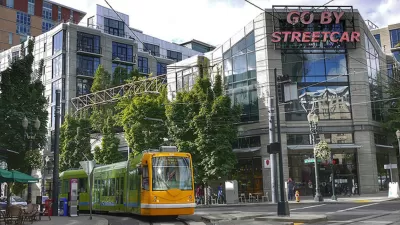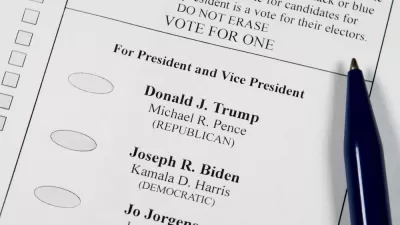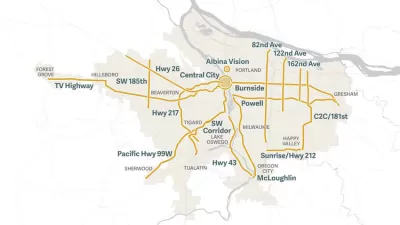Without buy-in for new ways of thinking at the state level, the presidential election is not likely to change much about the ways the United States plans and funds transportation infrastructure.

Yonah Freemark offers a little perspective about the future of transportation planning and policy heading into the presidential election next week, starting first with a nod to the conventional thinking about the potential of a major sea change at the federal level to deliver necessary change in how the nation plans and funds its transportation priorities:
Hoping to respond to the economic crisis brought on by COVID-19 and the prospect of Democratic control over both houses of Congress and the White House, Senate Democrats have begun preparations for a $1 trillion infrastructure package.
The list of possibilities for a Democratic-led coalition on transportation are enticing, but Freemark insists that far bigger prizes can be found at the local and state level:
Yet the key questions regarding transportation in the United States—whether the country is able to truly adapt its mobility system to mitigate the devastation wrought by climate change; whether we integrate transportation and land-use planning so as to reduce exurban expansion and automobile dependency; whether we harness access as a tool to reduce inequality, rather than as a mechanism to further empower and enrich a lucky few—are in fact more often than not in the hands not of the federal government, but rather in those of elected officials at the state and municipal levels.
According to Freemark, states and cities have a habit of making regressive choices on transportation, and "neither the federal government nor lower levels of government have been particularly effective custodians of their massive expenditures on transportation—at least when it comes to achieving more sustainable and equitable outcomes."
In the rest of the article, Freemark throws water on the idea that an infrastructure stimulus will provide equitable or sustainable projects without buy-in from local and state governments. The solution to these challenges, according to Freemark: change at lower levels of government, not just at the very top.
FULL STORY: The path to a better transport system runs through progressive states and cities

Maui's Vacation Rental Debate Turns Ugly
Verbal attacks, misinformation campaigns and fistfights plague a high-stakes debate to convert thousands of vacation rentals into long-term housing.

Planetizen Federal Action Tracker
A weekly monitor of how Trump’s orders and actions are impacting planners and planning in America.

In Urban Planning, AI Prompting Could be the New Design Thinking
Creativity has long been key to great urban design. What if we see AI as our new creative partner?

Cal Fire Chatbot Fails to Answer Basic Questions
An AI chatbot designed to provide information about wildfires can’t answer questions about evacuation orders, among other problems.

What Happens if Trump Kills Section 8?
The Trump admin aims to slash federal rental aid by nearly half and shift distribution to states. Experts warn this could spike homelessness and destabilize communities nationwide.

Sean Duffy Targets Rainbow Crosswalks in Road Safety Efforts
Despite evidence that colorful crosswalks actually improve intersection safety — and the lack of almost any crosswalks at all on the nation’s most dangerous arterial roads — U.S. Transportation Secretary Duffy is calling on states to remove them.
Urban Design for Planners 1: Software Tools
This six-course series explores essential urban design concepts using open source software and equips planners with the tools they need to participate fully in the urban design process.
Planning for Universal Design
Learn the tools for implementing Universal Design in planning regulations.
Appalachian Highlands Housing Partners
Gallatin County Department of Planning & Community Development
Heyer Gruel & Associates PA
Mpact (founded as Rail~Volution)
City of Camden Redevelopment Agency
City of Astoria
City of Portland
City of Laramie





























